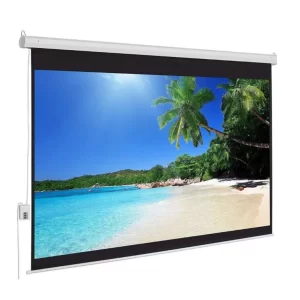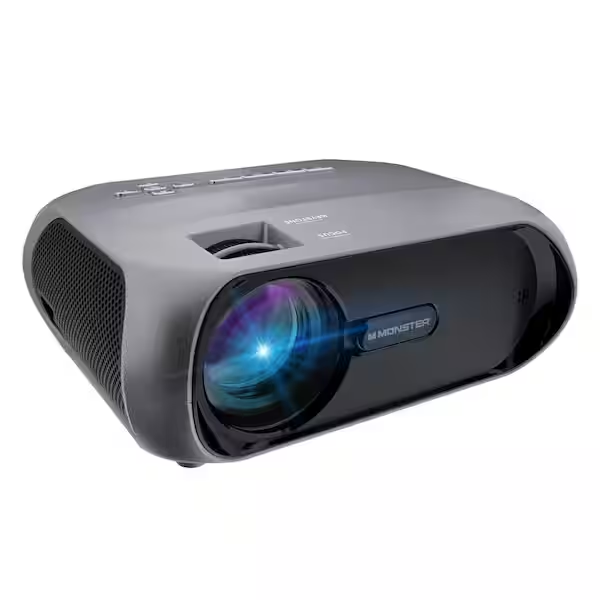In recent years, home entertainment has taken a giant leap forward thanks to advancements in projector technology. The 4K short throw projector stands out as a prime choice for those seeking a high-quality viewing experience in limited spaces. Unlike traditional projectors, a short throw model can produce a large image from a short distance, making it perfect for small rooms. This guide explores the key features and considerations you should take into account when choosing the best 4K short throw projector for your needs.
Understanding 4K Resolution
What is 4K Resolution?
4K resolution, also known as Ultra HD, provides a pixel count of 3840 x 2160, which is four times that of 1080p. This high level of detail enhances the viewing experience, making images sharper and more vibrant. When watching movies or playing video games, the clarity of 4K resolution means that even minute details pop, making textures more realistic and immersing viewers in the action. For cinema enthusiasts and gamers, the depth of field created by high-resolution images adds a layer of enjoyment that standard resolution simply cannot match.
The Importance of Source Material
To truly experience the benefits of 4K resolution, ensure that you have access to compatible content. Streaming services like Netflix, Amazon Prime, and Disney+ increasingly offer 4K content, as do many new Blu-ray discs. It’s important to consider your usual viewing habits; if you often watch older movies or shows, the transition to 4K may require more planning to find suitable content. Additionally, using 4K compatible devices such as UHD Blu-ray players or gaming consoles enhances your overall experience. When choosing your projector, consider whether you’ll primarily use it for movies, gaming, or presentations. This understanding informs not only the type of projector you’ll need but also the kinds of devices and cables to pair with it.

Analyzing Short Throw Technology
What is Short Throw Technology?
Short throw projectors are designed to project a large image from a short distance away. Typically, they can create a 100-inch image from around 3 to 10 feet, depending on the specific model. This feature allows users to place the projector almost next to the wall, eliminating the need for complex mounting or excessive cabling. Such convenience is a game-changer for those with limited space and makes it easier than ever to set up a home theater system without needing an elaborate setup.
Benefits of Short Throw Projectors
Beyond saving space, short throw projectors minimize shadow issues, which can be detrimental to the viewing experience. In traditional setups, if you walk in front of a projector, your body can obstruct the light, creating unwanted shadows that disrupt the image. However, with a short throw projector, this problem is rare. This feature makes short throw projectors ideal for living rooms or multi-purpose spaces where people move around during viewings. As a result, they have become increasingly popular for family movie nights, gaming sessions, or even presentations in smaller offices.
Evaluating Brightness Levels
Understanding Lumens
Brightness is a critical factor when selecting a projector. Measured in lumens, the brightness level indicates how well a projector performs in various lighting conditions. A projector with at least 2,500 lumens is an excellent choice for typical living room environments. If you plan to use the projector in a well-lit room or during the day, you may need a model with higher brightness levels—around 3,000 to 4,000 lumens—to ensure a clear image. Bumping up the brightness will allow for daytime viewing without compromising picture quality.
Adapting to Your Environment
When determining the ideal brightness, consider the level of ambient light in your viewing area. If you can control the lighting—like with blackout curtains—the brightness may not need to be as high. However, if your space is often bright, prioritize models with higher lumens. It’s wise to test the projector in different lighting conditions when possible. By doing so, you can assess how well the projector performs under various circumstances, ultimately helping you derive maximum enjoyment from your visual experience.

Assessing Contrast Ratios
What is Contrast Ratio?
The contrast ratio measures the difference between the darkest and brightest parts of an image. Higher contrast ratios lead to deeper blacks and brighter whites, contributing to more lifelike images. For an immersive viewing experience, a contrast ratio of at least 1,500:1 is a good benchmark. This ratio helps enhance the overall quality of the viewing experience, making images more dynamic and engaging, especially for movies with a lot of dark scenes or vivid landscapes.
The Role of Color Depth
When evaluating contrast ratios, also consider color depth. A projector that offers a wide color gamut enhances your experience further by ensuring that colors are not just accurate but vibrant. Look for projectors with HDR (High Dynamic Range) support, which allows for better contrast and brighter colors. This combination ensures that you get the best possible image quality, making films and games visually stunning. The combination of contrast and color depth creates a viewing experience that rivals that of a cinema, allowing you to enjoy bright, colorful visuals without sacrificing dark scenes.
Connectivity Options
The Importance of Multiple Inputs
As technology becomes more integrated into our lives, the significance of connectivity cannot be overstated. A good 4K short throw projector should offer multiple input options, including HDMI, USB, and even Wi-Fi or Bluetooth connectivity. Look for models with at least two HDMI ports to accommodate different devices such as gaming consoles, Blu-ray players, and streaming devices. Having multiple connectivity options not only makes it easier to switch between devices but also future-proofs your home theater setup as new technology emerges.
Smart Features
Many modern projectors come with built-in smart features, allowing for direct access to streaming services without the need for additional devices. Consider whether you want a projector with integrated apps that eliminate the need for external streaming devices. Some projectors offer voice control and smart home integration, making them easy to operate through various means. A projector equipped with smart features saves you time and enhances convenience when selecting your content, streamlining your overall home entertainment system. By tapping into these features, you elevate your viewing experience, turning your setup into a fully functional entertainment hub.
Considering Sound Quality
Built-in Speakers vs. External Systems
While many projectors come with built-in speakers, the sound quality can vary widely. Projector speakers often lack the depth and clarity needed for an immersive viewing experience, making external sound systems a necessity for cinephiles. If you prefer the convenience of having everything in one device, look for models with good built-in audio. However, if audio quality is a priority, plan to invest in a separate sound system, such as a soundbar or a full surround sound setup.
Surround Sound Compatibility
In addition to considering the built-in speaker quality, check for surround sound compatibility. Many home theater enthusiasts appreciate a multi-channel audio setup that enhances immersion. Look for projectors that support Dolby Atmos or other surround sound technologies, as these features make for a complete cinematic experience. The right audio system will complement the visuals beautifully, ensuring that every explosion, whisper, and musical score resonates with depth and clarity. By prioritizing sound quality alongside visual excellence, you create a truly immersive environment that rivals the best theaters.

Budget Considerations
Finding the Right Price Point
Setting a budget is crucial when exploring your options. Prices for 4K short throw projectors range significantly, from a few hundred to several thousand dollars. Determine what features are most important for your needs and allocate funds accordingly. Keep in mind that while investing in premium models might seem costly upfront, they can deliver exceptional picture quality and durability, yielding better performance over time.
Long-term Value
When evaluating projectors, consider the long-term costs, including potential replacement bulbs or service fees. Some models may initially seem cheaper but come with higher overall maintenance costs, such as needing frequent bulb replacements. In contrast, higher-end models may use LED or laser technology that requires less frequent changes. Do your research, read reviews, and consider warranty options to ensure you get the best value for your investment. Factor in potential additions to your budget, like a screen or sound system, to get a complete picture of the overall expense and ensure your home theater is complete.
Conclusion
Choosing the best 4K short throw projector involves careful consideration of various factors, from resolution and brightness to connectivity and sound quality. Understanding these elements will help you make an informed decision tailored to your entertainment needs. With the right projector, you can transform your viewing experience, bringing cinema-quality visuals into the comfort of your home.
Investing time in research and evaluation will pay off significantly as you enjoy immersive, high-quality visuals for years to come. By actively engaging with the technical specifications and features available, you can select the perfect projector that aligns with your space and lifestyle. Embrace the future of home entertainment by choosing a 4K short throw projector that fits your unique space and preferences, and make every viewing experience exceptional!



